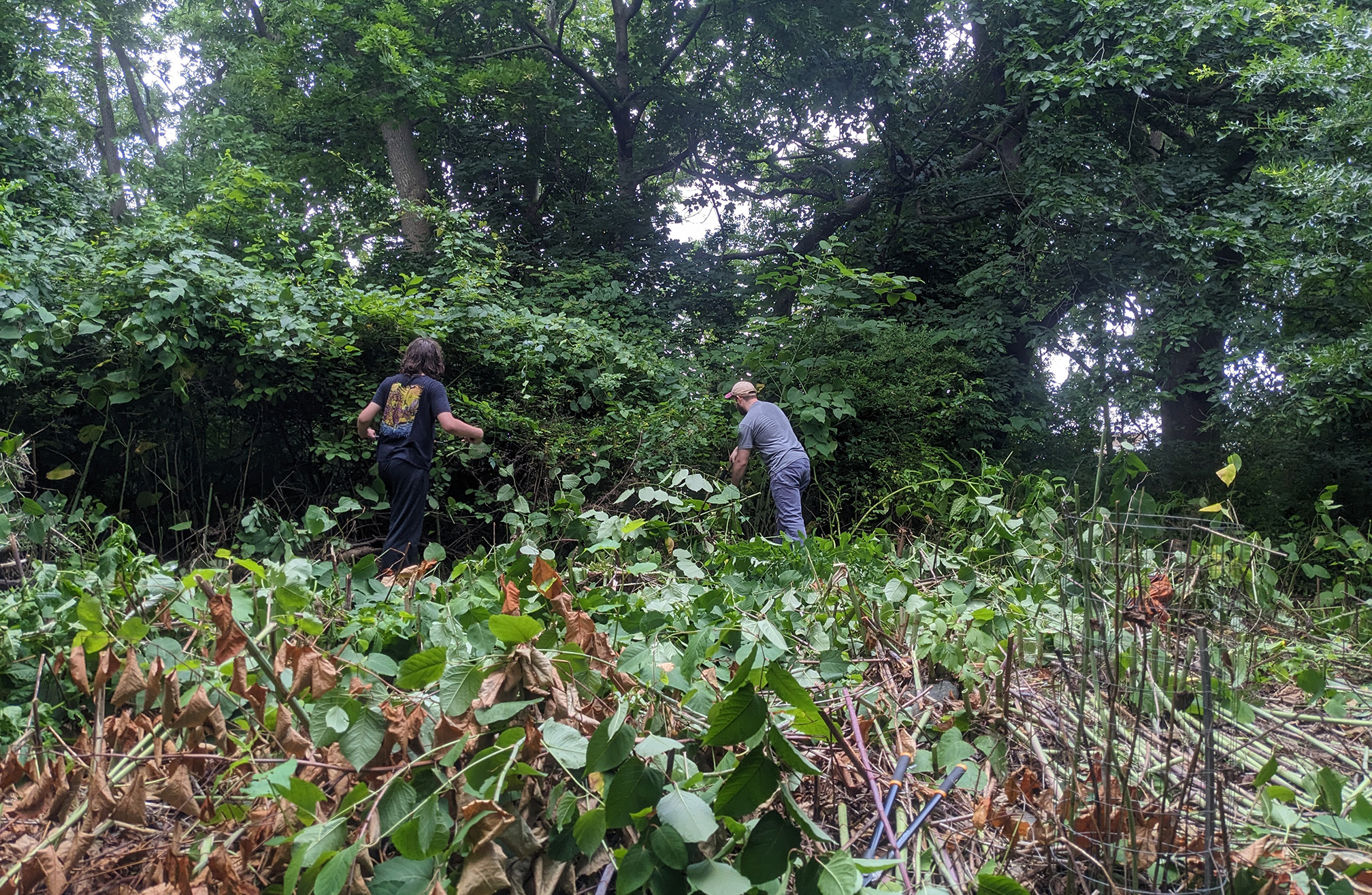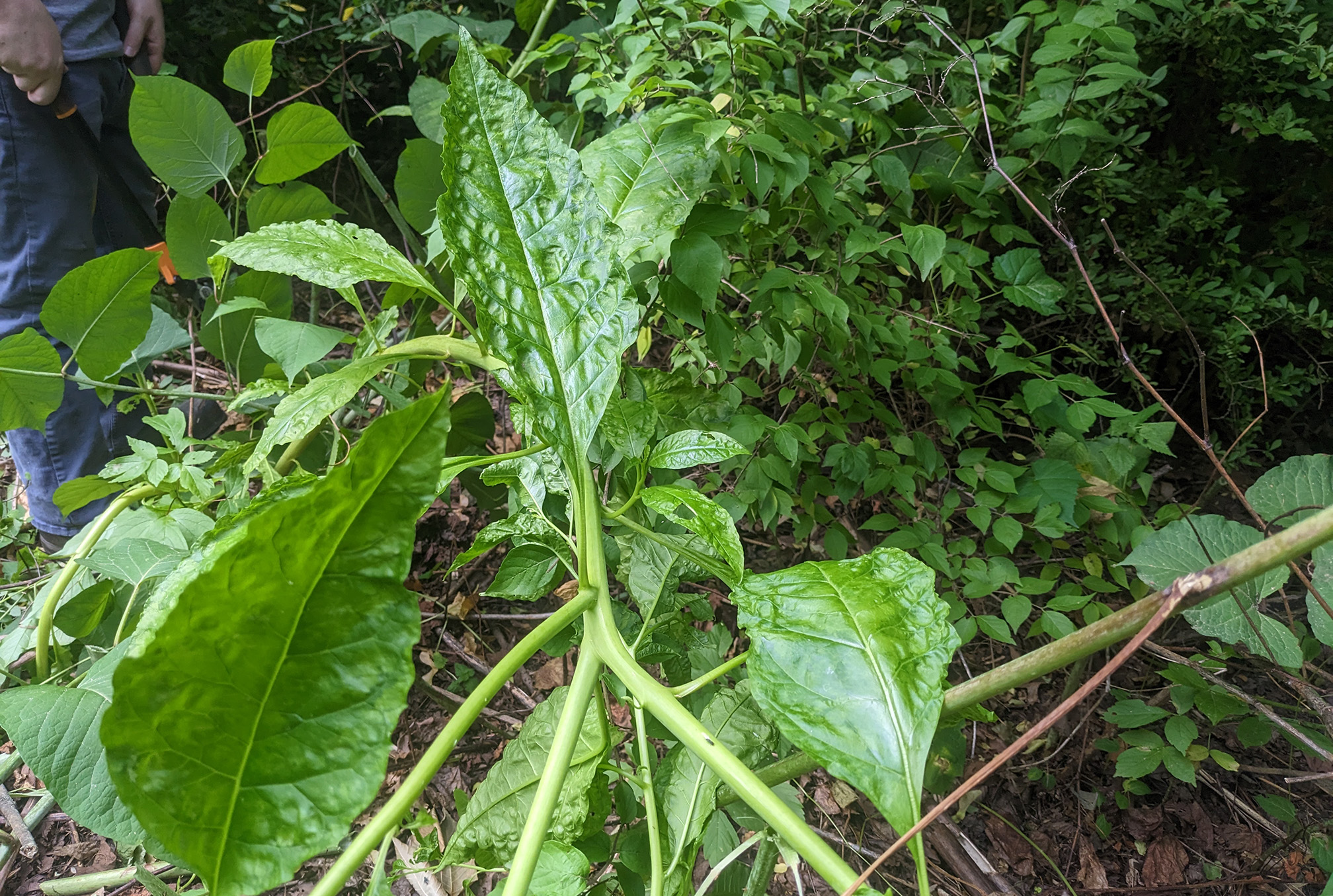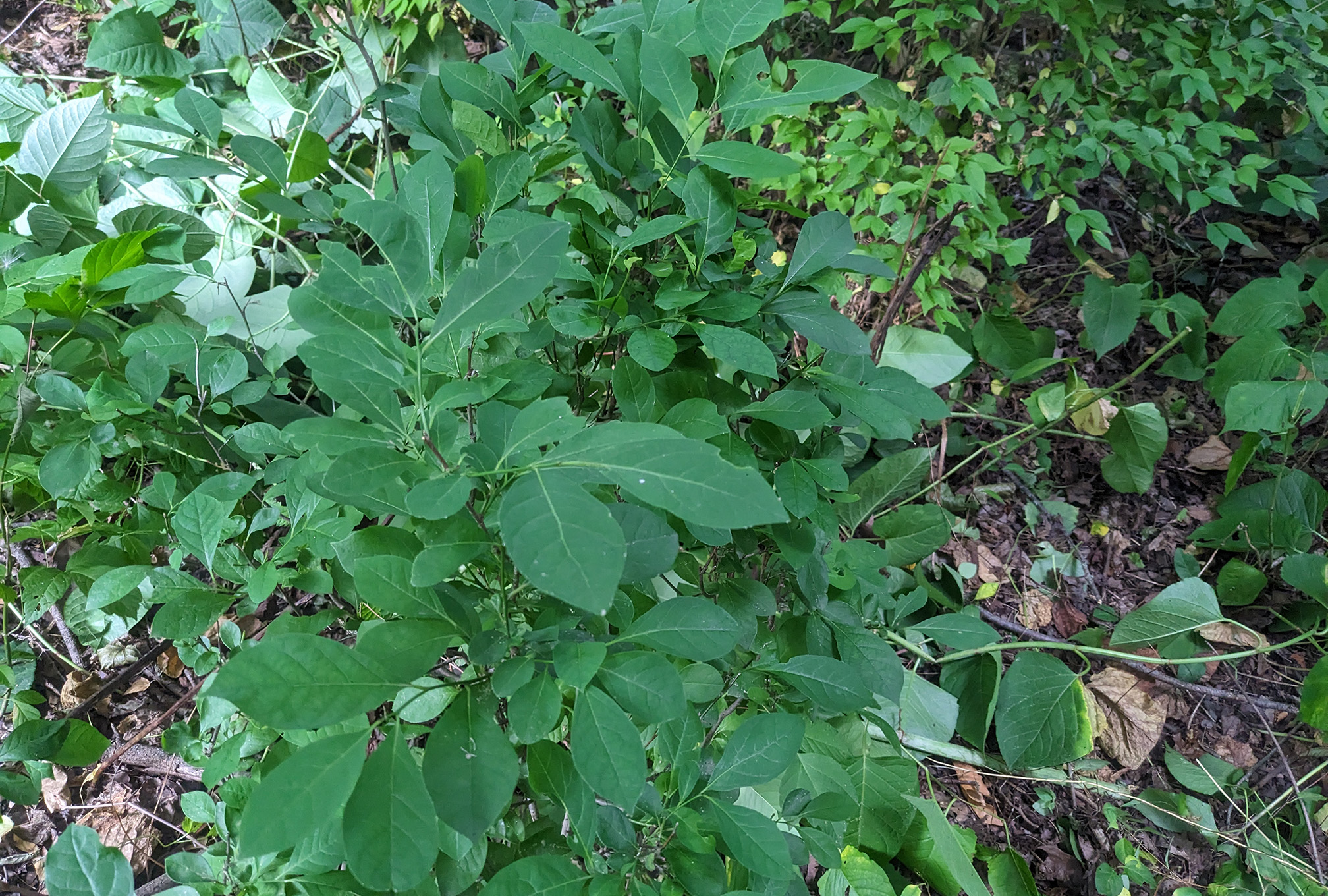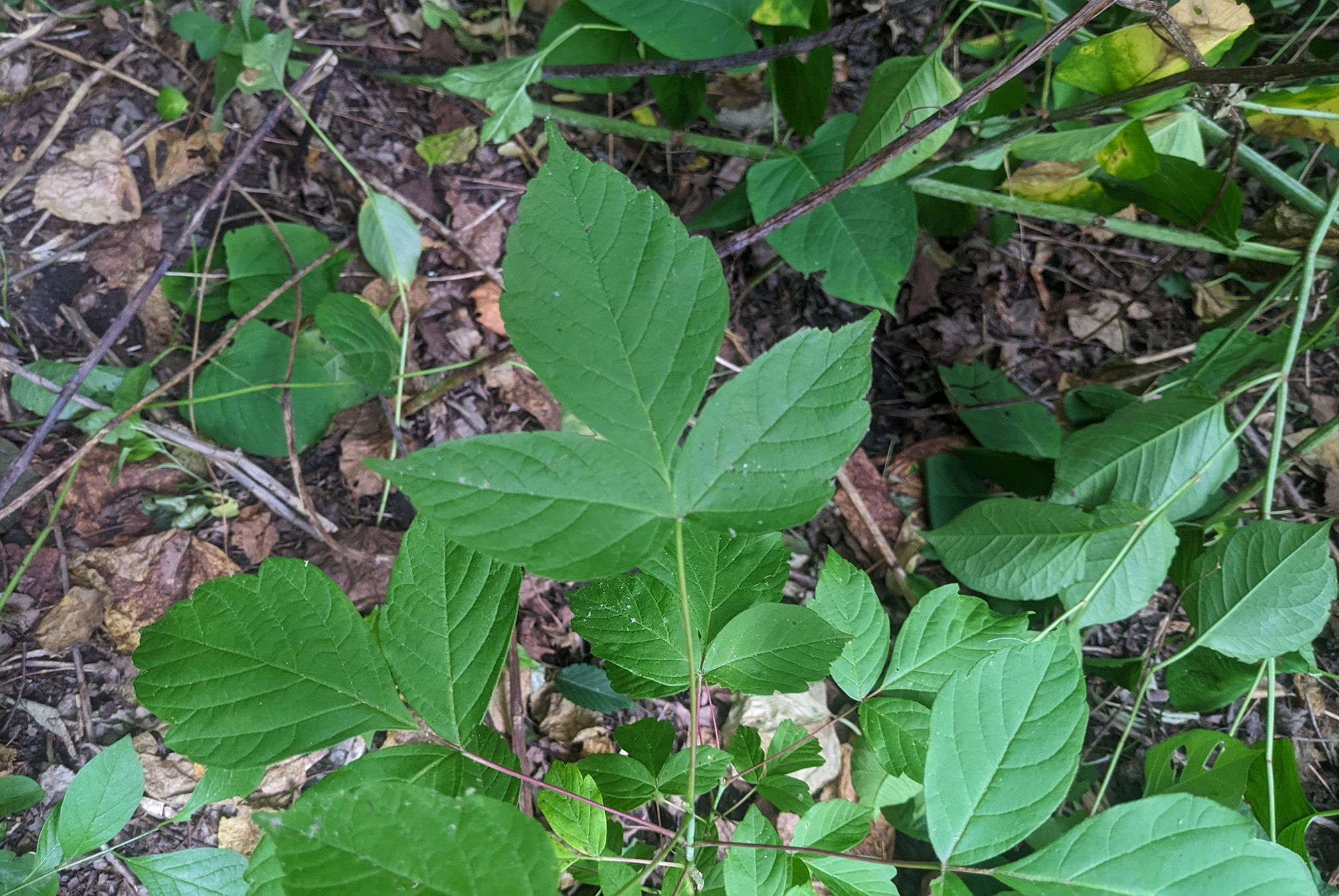
By WRV Advisory Board Member Finn Gorman
Recently, WRV volunteers helped clear a planting area near Pachella Field. As a site that has been tended by WRV for quite a while there were signs of recovery all around. What had been a sun-bleached gap in the tree canopy, dominated by invasive species, is now well on its way towards being a healthy part of an early succession forest system. Trees in protective cages from past plantings had grown tall, providing shade for a diversity of understory plants. Saplings and young native plants are beginning to repopulate the area whose biodiversity had been slashed due to degraded environment and the encroachment of invasive species.
However, these plants are still young and vulnerable. Until they can grow a bit more, a veil of Japanese Knotweed (Reynoutria japonica) threatens to spread and suffocate the young ecosystem. Our volunteers have been hard at work (see above), surgically cutting back Knotweed and making space for plants to breathe.
A healthy ecosystem is a complex system that balances the survival of countless species – not only of plants – but animals, insects, fungi and soil microbes as well. The impact of humans can often throw this balance off in such a drastic and abrupt way that the ecosystem breaks down and cannot recover. In fact, things can be so degraded that an aggressive non-native plant species can dominate the whole area and stop any other plants from growing. Unrecognized by insects or large animals, these non-native (or “invasive”) plants continue to grow while providing little back to the ecosystem’s health. At this point, biodiversity is obliterated and a healthy balance is impossible without intervention. Effective environmental restoration serves as this intervention.
The goal is to address the disruption, restore locally relevant native species, and reset the scales of the ecosystem dynamics to a point where it can continue to function without more intervention. One step on this path is the involvement of ‘volunteers’, not only our helpful humans at WRV, but plants that have found their way into our site without being intentionally planted in the past. ‘Volunteer’ plants are a sign that the grip the knotweed has had on this area is loosening and the ecosystem balance is fast approaching.
While clearing out Knotweed, WRV volunteers discovered a handful of such ‘volunteer’ plants: Pokeweed, Box Elder, and SpiceBush (see below) are some species that saw the attractive land that we have cleared and found their way into the ground. As these plants grow alongside Oaks and Maples planted by past volunteers, so does the success of our restoration! We look forward to monitoring this and many other sites along with our volunteers. Keep an eye out for future volunteer opportunities and join us!

Common pokeweed (Phytolacca decandra) is an herbaceous perennial plant that can grow up to 9 feet tall.

Named for the sweet, spicy fragrance when the twigs, leaves, or fruit are crushed, spicebush is a fast-growing deciduous shrub native to the eastern United States.

Acer negundo, the box elder, is a species of maple native to North America.
We look forward to monitoring this and many other sites along with our volunteers. Keep an eye out for future volunteer opportunities and join us!

